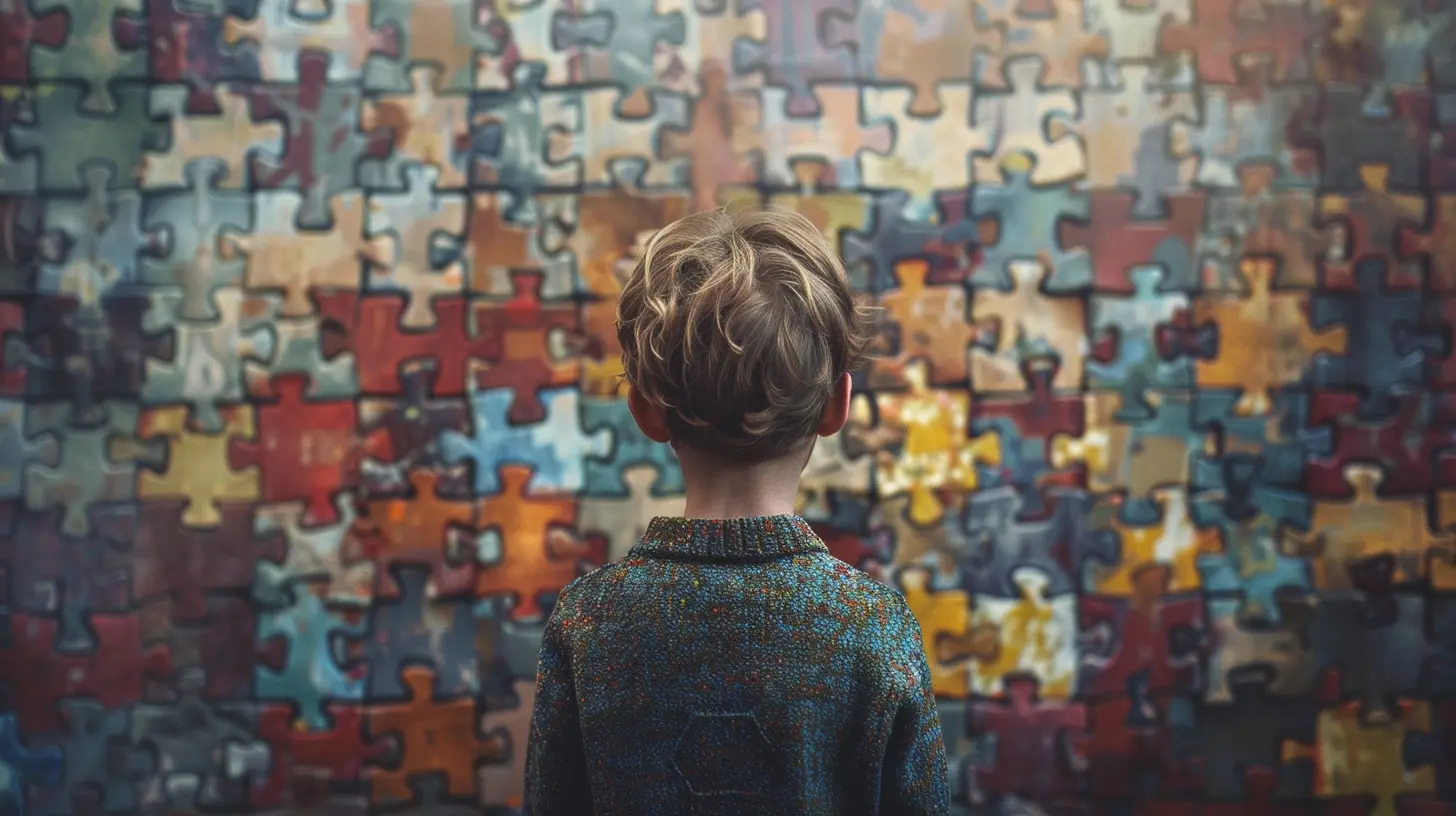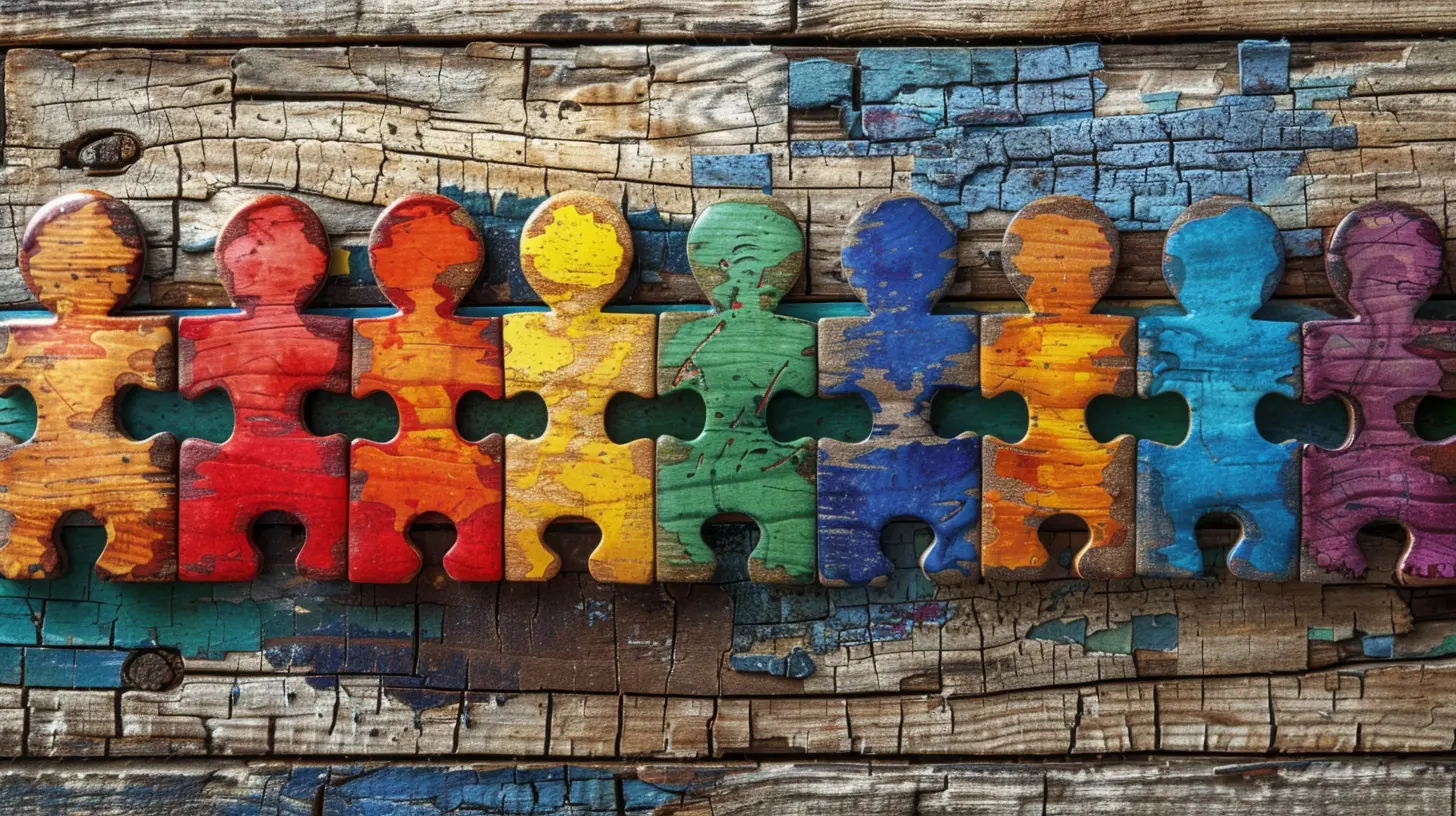The Role of Play in the Development of Autistic Children
20 June 2025
When you think about childhood, what’s one of the first things that comes to mind? Play, right? Whether it’s building blocks, playing pretend, or chasing bubbles in the backyard, play is a huge part of growing up. But for children on the autism spectrum, play can look a little different—and it’s more than just fun and games. It’s foundational.
In this article, we're diving deep into the role of play in the development of autistic children. We'll cover why it's so important, how it's different for kids with autism, and what strategies can actually help these kiddos not just play—but thrive.
Why Play Matters So Much in Early Development
Let’s start with the basics. Play, especially in early childhood, is the engine of growth. It’s how kids learn to interact with the world, express their feelings, build social skills, and develop cognitive abilities. Yup—those seemingly silly games are actually brain workouts in disguise.For neurotypical kids, play tends to come naturally. But for autistic children, engaging in spontaneous, imaginative play isn’t always easy. That doesn’t mean they’re not capable of deep learning through play—it just means the rules of the game need to be adapted a bit.
Understanding Autism and Play
So, what’s different when it comes to autistic children and play?Autism Spectrum Disorder (ASD) affects how a child communicates, interacts, and perceives the world. For many autistic children, play may be more repetitive, focused on objects rather than people, or less socially collaborative.
For example, where one child might use a toy car to zoom around and make vroom-vroom sounds, an autistic child might line up the cars by color—fascinated by patterns and order. It’s not wrong; it’s just different.
Their play might not involve others at first, and that’s okay. The goal isn't to change the way they play to match typical standards but to meet them where they are and support their growth from there.
The Four Types of Play—and How They Show Up in Autism
Let’s break this down into the main types of play. Each one plays a role (no pun intended) in development, and each can look a little different for children with autism.1. Sensory Play
Think sand, water tables, finger paint—that hands-on, messy kind of fun.Autistic children often have sensory processing differences. Some love the feel of slime; others might find it uncomfortable. Sensory play helps them regulate their responses and can be incredibly calming and therapeutic.
👉 Pro Tip: Try customizing sensory bins with textures your child enjoys. No two bins—or kids—are the same.
2. Functional Play
This is when a child uses toys the “right” way—rolling a toy train on its track or stacking blocks.Autistic children often start here and might stick with it longer. That’s totally fine. It forms the basis for more complex play down the line. Think of it like learning the chords before playing a song.
3. Constructive Play
Now we’re talking about building or creating something—like puzzles, LEGOs, or drawing.This type of play is often a strong suit for autistic kids who love structure and predictable outcomes. It also helps with problem-solving and fine motor skills.
4. Pretend (Symbolic) Play
This is where we see imagination take flight—playing house, pretending to be superheroes, or having tea with stuffed animals.Pretend play can be tough for autistic children because it involves abstract thinking and social interaction. But with support and modeling, many autistic kids can develop these skills in their own unique ways.
The Social Benefits of Play for Autistic Children
Let’s talk relationships. Play isn’t just about toys—it’s about connection. Through play, kids learn to take turns, read facial expressions, and practice empathy. For autistic children, who often struggle with social cues, these moments are golden opportunities.But we have to pace it right. Forcing social play before a child is ready can backfire. Instead, start with parallel play (playing side-by-side) and naturally build toward cooperative play as comfort grows.
👉 Remember: Every step forward matters. Even small interactions like making eye contact or sharing a toy are big wins.
Play as a Language Builder
Many autistic children face challenges with speech and communication. But here’s some good news—play is a fantastic tool for language development.How?
- Naming objects during play helps with vocabulary.
- Turn-taking games teach conversation rhythm.
- Pretend play introduces storytelling and sequencing.
Even kids who are nonverbal can benefit from communication-focused play using gestures, pictures, or assistive technology. The key is engaging in meaningful, back-and-forth interaction—whatever form it takes.
Emotional Regulation Through Play
Ever notice how a child calms down after swinging on a swing or zoning in on a puzzle? Play isn’t just fun—it’s therapeutic.Autistic children often experience emotional dysregulation. Structured play can help them build coping mechanisms, understand emotions, and manage stress.
Sensory activities like squeezing playdough or jumping on a trampoline can provide the input they need to self-soothe. Other times, imaginative play helps them process feelings they can’t yet express in words.
Tailoring Play to Each Child’s Needs
There’s no one-size-fits-all approach. Some autistic kids love numbers and patterns; others are into music or animals. Use their interests to guide playtime.Here are some easy, tailored play ideas:
- For sensory seekers: Water play, kinetic sand, or fidget toys.
- For structure lovers: Building sets, memory games, or sorting tasks.
- For imaginative minds: Puppets, costumes, or storytelling with dolls.
The more you observe and respond to what lights them up, the more engaged and meaningful play becomes.
The Role of Parents and Caregivers in Play
You don’t need to be a therapist to make a difference. As a parent, you have a superpower: connection. Engaging in play with your child builds trust and opens up learning opportunities in a natural way.Start small. Follow their lead. If they’re spinning a top for the tenth time, spin one too. Join their world instead of pulling them into yours, and you’ll find that those shared moments lead to unexpected breakthroughs.
How Therapists Use Play in Interventions for Autism
Occupational therapists, speech-language pathologists, and ABA therapists often use play-based interventions to help autistic children reach developmental goals.Here are a few common approaches:
- DIR/Floortime: Focuses on emotional and relational development through child-led play.
- Play therapy: Uses toys and games as a medium to explore emotions and behavior.
- Pivotal Response Treatment (PRT): A naturalistic approach targeting motivation and response through play-based interactions.
The takeaway? Evidence-based therapies increasingly recognize play as not just an activity—but a bridge to skill-building and deeper development.
Encouraging Peer Play and Inclusion
Let’s not forget the importance of friendships. Social play with peers can boost confidence and social awareness in autistic children. But it needs to be structured and supported—think smaller groups, coached interactions, and lots of praise.Inclusive playgroups, buddy programs, or schools with neurodiversity-informed approaches can make a big difference. It’s about creating spaces where autistic kids feel seen, safe, and supported.
Common Challenges—and How to Handle Them
We’d be sugarcoating it if we said playtime is always easy. There can be hurdles:- Fixation on one toy? Try gently introducing variations or expanding the theme.
- Avoids group play? Start with parallel activities before nudging toward interaction.
- Meltdowns during transitions? Use visual cues or timers to prepare for change.
Patience is key. Progress may be slow and uneven, but it’s still progress.
Final Thoughts: Reimagining Play for Autistic Children
Here’s the truth: play doesn’t need to look typical to be meaningful. A child spinning a wheel for hours might be learning about motion, patterns, or calming their nervous system. What matters most is that they’re engaged, happy, and growing.As caregivers, educators, and therapists, our job isn’t to “fix” play—it’s to create a safe, supportive space where autistic children can use play in the way that best helps them flourish.
Let’s redefine play not by what it looks like, but by what it does. When we do that, we open the door to real understanding—and real progress.
all images in this post were generated using AI tools
Category:
AutismAuthor:

Paulina Sanders
Discussion
rate this article
2 comments
Callie Jimenez
This article highlights the crucial role of play in fostering social, cognitive, and emotional development in autistic children. By engaging in structured and unstructured play, these children can improve communication skills, build friendships, and enhance problem-solving abilities, ultimately promoting greater independence and a better quality of life.
June 22, 2025 at 2:48 AM

Paulina Sanders
Thank you for your insightful comment! I'm glad you found the article's emphasis on play's impact on autistic children's development valuable.
Dolores Horne
This article highlights the crucial role of play in the development of autistic children. By fostering social skills, communication, and emotional regulation, play offers unique therapeutic opportunities. Emphasizing structured and unstructured play can empower these children to thrive and enhance their overall well-being. Great insights!
June 21, 2025 at 3:39 PM

Paulina Sanders
Thank you for your thoughtful comment! I'm glad you found the insights on the importance of play for autistic children valuable.


